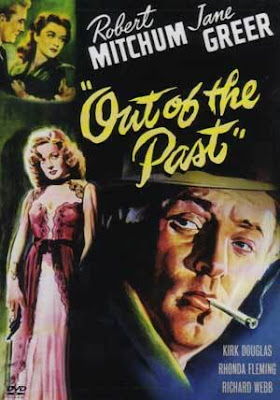
I don’t want to get into the habit of just doing directors top ten lists, but for now let’s just keep it simple. Ingmar Bergman is probably one of the most iconic film directors who appeared during the rise of European art cinema in the 1950s. Although he had been working quite a lot before that, this was truly the period where he emerged as one of the forces of deeply personal and profound films. For me, personally, he was one of the first European filmmakers I started to explore, and therefore has quite a bit of significance on me and my sensibility when watching films.
10. Tystnaden (1963)
Controversial at its release, Tystnaden was the last of Bergman’s informal faith trilogy. Somehow, I always felt that the film lacked some of the crucial elements that are usually part of Bergman’s cinema. Still, the way he builds up the tension and the strict camera discipline is at times harrowing. It doesn’t evoke some of the issues one is used to in Bergman, but it has a quintessential European “feel”, much like L’Avventura and La Dolce Vita.
9. Fanny och Alexander (1982) Well, I had to add the movie that introduced me to Bergman in the first place. While Bergman always has been a deeply personal filmmaker, I feel this is his most personal film. It has a strong nostalgic feel to it, and much of the events are taken right out of his childhood. The cinematography is as beautiful as colour cinematography gets, and some of the sequences are wonderfully hypnotic.
8. Det Syvende Inseglet (1957)
While at the time of making Det Syvende Inseglet Bergman was already quite famous in Sweden and had made some films that were hailed in Europe, this is without doubt the film that threw him into the international scene, and made him one of the most important contemporary filmmakers in Europe. The medieval setting is properly apocalyptic, and with a great group performance from the cast of Bergman regulars, the film stands as one of the greatest classics of European cinema.
7. Nattvardsgästerna (1962)
This is a quiet little film, at least on the outside. But the internal hell and struggle that the protagonist goes through is at times overwhelming. Gunnar Björnstrand is fantastic as the priest who has lost faith in a higher being, and is well supported by the actors around him, as well as a great little part from Max von Sydow. But what makes this film truly great is the focused cinematography which with its minimalistic style manages to create as much emotion as possible, through some very subtle camerawork.
6. Vargtimmen (1968)
Probably Bergman’s most isolated and paranoid film, Vargtimmen is a visual nightmare like few other films can achieve. The claustrophobic setting and cinematography builds up the internal terror that the characters experience. It is both a strange and scary experience to watch. While I feel it lacks some of the usual subtlety and themes that Bergman explores, the film stands high for its extremely effective use of its visual medium as a nightmare.
5. Såsom i en spegel (1961)
The use of barque music in this chamber film is excellent, and adds to the isolation and mental turmoil that the characters go through. The most interesting aspect of the film is the sexual tension between the brother and sister characters, which towards the end of the film increase into unbearable heights.
4. Sommarnattens leende (1953)
A much underrated gem by Bergman, Sommarnattens leende was his first success abroad, although it didn’t bring him into the spotlight like Det Syvende Inseglet did. The film is a subtle comedy piece with some wonderful acting and delightfully witty script. So it is a much more enjoyable film in the classic sense when considering Bergman films, and that is why I love this film, the pure joy of it. The ending is fantastic.
3. Persona (1966)
Perhaps Bergman’s most difficult film, Persona is one of the finest masterpieces within abstract cinema. Calling Persona abstract is perhaps wrong, in a sense, but it is without doubt the film he made with the most radical and innovative narrative form. The intense emotions which so often are the greatest element in Bergman’s films is at times destructive in this film and the play between the two actresses are absolutely fantastic, walking a fine line between fascination and repulsion.
2. Viskningar och Rop (1972)
Destruction in the eye of the beholder. Blood and disturbing sexual desire. Few words can describe the emotional breakdown and writhing pain one has to suffer when watching this film. Brilliant cinematography in every sense of the word and a hypnotic and tense atmosphere. Enough said.
1. Smultronstället (1957)
I love Smutronstället, it is one of my favourite films of all time. Despite its relative short running time, the film contains everything that cinema could encompass. A road trip movie, the film allows itself a lot of time and space to explore different areas of the protagonist’s life and the unfolding of his previous deeds builds up our understanding of the character wonderfully. There are also some great moments with hitchhikers which further allow the film to unfold unto different themes and ideas. The ending is very uplifting, and brings both the character and narrative to a brilliant conclusion. This film enters into the exclusive group of a few films which I have seen three times in a row, without any break.






















